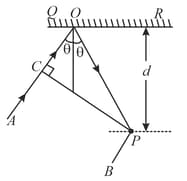While Interference of Reflected Waves from Thin Film for Normal Incidence, the path difference is twice the thickness of film .
Important Questions on Wave Phenomena (HL)
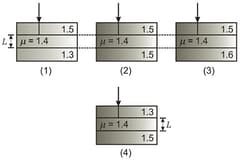
(Take )
Transmission through thin layers. In the figure given below light is incident perpendicularly on a thin layer of material that lies between (thicker) materials and (The rays are tilted only for clarity.) Part of the light ends up in material as ray (the light does not reflect inside material ) and (the light reflects twice inside material ). The waves of and interfere and here we consider the type of interference to be either maximum (max) or minimum (min). For this situation, each problem in the table refers to the indices of refraction and the type of interference, the thin-layer thickness in nanometers, and the wavelength in nanometers of the light as measured in air. Where is missing, give the wavelength that is in the visible range. Where is missing give the second least thickness or the third least thickness as indicated.
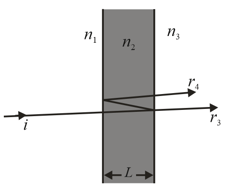
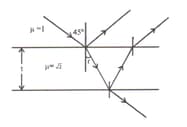
Direction: The question has a paragraph followed by two statements, Statement and statement. Of the given four alternatives after the statements, choose the one that describes the statements. A thin air film is formed by putting the convex surface of a plane-convex lens over a plane glass plate. With monochromatic light, this film gives an interference pattern due to light reflected from the top (convex) surface and the bottom (glass plate) surface of the film.
When light reflects from the air-glass plate interface, the reflected wave suffers a phase change of .
The centre of the interference pattern is dark.
In the below figure, a broad beam of light of wavelength is incident at on a thin, wedge-shaped film with an index of refraction . The transmission gives bright and dark fringes along the film's length. What is the left-to-right change in the film thickness?
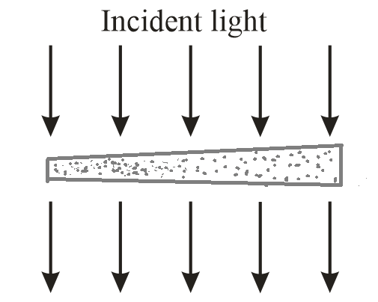
(R is perfect reflecting surface) :

